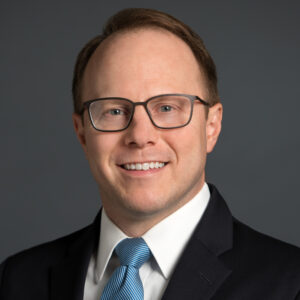Environmental Alert
(by Lisa M. Bruderly and Gary E. Steinbauer)
Another three-judge panel of federal appellate judges has ruled on whether a National Pollutant Discharge Elimination System (NPDES) permit is required for pollutants in groundwater seepage that ultimately reach a water of the United States. Unlike the two other federal appellate court decisions issued earlier this year, this time the federal appellate court held that the Clean Water Act (CWA) did not regulate such discharges, finding that there was no “point source.”
On September 12, 2018, the U.S. Court of Appeals for the Fourth Circuit issued its decision in Sierra Club v. Virginia Electric Power Co. (VEPCO), holding that diffuse underground seepage from coal ash settling ponds and a landfill located at a closed coal-fired power plant are not regulated under the CWA. The VEPCO matter is one of several citizen suits filed by environmental groups across the country asserting novel theories of liability under the CWA. The Fourth Circuit in VEPCO was the first appellate court to address these theories with respect to coal ash ponds and landfills. The VEPCO decision is available at http://www.ca4.uscourts.gov/opinions/171895.P.pdf.
Factual and Legal Background
VEPCO involved inactive settling ponds and a landfill that were used to treat and store coal ash generated by an adjacent coal-fired power plant in Chesapeake, Virginia. VEPCO operated the settling ponds under a state-issued NPDES permit and the landfill under a state-issued Resource Conservation and Recovery Act (RCRA) permit. In 2002, groundwater samples collected from a series of monitoring wells installed pursuant to the RCRA permit showed elevated levels of arsenic in the groundwater and VEPCO implemented corrective action under a state-approved plan. By the time the Sierra Club filed its CWA citizen suit in 2015, the power plant had closed, and, shortly afterward, VEPCO submitted closure and post-closure care plans for the settling ponds and landfill to the Virginia Department of Environmental Quality (VDEQ).
The Sierra Club’s citizen suit against VEPCO alleged three counts, with one count alleging that seepage of arsenic from the coal ash ponds and landfill into the nearby river and creek violated the CWA and two counts alleging violations of VEPCO’s NPDES permit. Following a bench trial, the federal district court held VEPCO liable for the count alleging violations of the CWA. The district recognized the so-called “conduit” theory of liability under the CWA, finding VEPCO liable for seepage of arsenic from coal ash into groundwater that had a “direct hydrological connection” to navigable waters, “such that the pollutant would reach navigable waters through groundwater.” The district court also held that both the settling ponds and landfill were “point sources.” The district court refused to find VEPCO in violation of the NPDES permit provisions. Both VEPCO and Sierra Club appealed the district court’s decision.
Appellate Court’s Unanimous Decision
Last week, the Fourth Circuit reversed the district court and held that VEPCO’s coal ash settling ponds and landfill were not regulated by the CWA, basing its decision largely on its conclusion that the settling ponds and landfill were not “point sources.” The CWA prohibits the unauthorized discharge of a pollutant from a “point source” into navigable waters. Under the CWA, a “point source” is “any discrete, confined, and discernible conveyance . . . from which pollutants are or may be discharged.” 33 U.S.C. §1362(14). The Court noted that “conveyance,” although undefined under the CWA, “is a well-understood term” that “requires a channel or medium – i.e., a facility – for the movement of something from one place to another.” Importantly, non-point source discharges are not regulated under the NPDES permit program.
While the district court found that the coal ash piles were point sources because rainwater and groundwater percolated through the coal ash, leaching arsenic into the groundwater and ultimately into surface water, the Fourth Circuit disagreed. As mere “static recipients of the precipitation and groundwater that flowed through them,” the Court found that the ponds and landfill were “not discrete ‘points’” and were not created to convey anything. Rather, the Court noted that the “diffuse seepage” of rainwater and groundwater through the coal ash material was “a generalized, site-side condition.” The judges in VEPCO held that this was not enough to conclude that the ponds and landfill were “point sources.”
The Court supported its determination by working backwards from what it described as the “larger scheme of pollution regulation enacted by Congress.” The CWA’s NPDES permit program is dependent upon effluent limitations governing the quantity, rate, and/or concentration of pollutants in a facility’s wastewater discharge. In this case, the amount of arsenic that leached from the ponds and landfill through groundwater and the rate at which the contaminated groundwater reached the surface waters were unknown. The inability to measure the amount of arsenic reaching the surface waters through “indeterminate and dispersed percolation” was viewed by the Circuit Court judges as an indication that the discharge did not originate from a “discernible, confined, and discrete conveyance.”
The Fourth Circuit also made a point to note that “diffuse discharges from solid waste,” such as coal ash ponds and landfills were already regulated under RCRA, pointing to RCRA regulations that the U.S. Environmental Protection Agency promulgated in 2015, among other regulatory requirements. These regulations govern the disposal of coal combustion residuals (e.g., coal ash) in landfills and surface impoundments. See 40 C.F.R. Part 257. We note that some of these regulations were recently vacated by a D.C. Circuit Court of Appeals Opinion that was summarized in a separate Babst Calland Environmental Alert.
Finally, the Fourth Circuit affirmed the district court’s finding that VEPCO was not in violation of the identified provisions of its state-issued NPDES permit. The Sierra Club alleged two violations of general conditions in VEPCO’s NPDES permit that prohibited the unauthorized “discharge into state waters” and the disposal of “other pollutants removed in the course of treatment or management” in a manner that resulted in pollutants “entering state waters.” “State waters” are defined in Virginia’s regulations to include groundwater. Nonetheless, deferring to VDEQ’s interpretation of these permit conditions, the Fourth Circuit found that both of these conditions were limited to discharges from a “point source.” In addition, the Fourth Circuit held that if it were to adopt the Sierra Club’s interpretation of these permit conditions, it would upend the regulatory scheme, noting that VEPCO’s RCRA permit and Virginia’s Solid Waste Management laws regulated the coal ash ponds and landfill. For all these reasons, the Fourth Circuit concluded that VEPCO was not in violation of its NPDES permit.
Potential Implications of the VEPCO Decision
The Fourth Circuit’s decision in VEPCO introduces new considerations into the ongoing debate of whether groundwater seepage to a water of the United States is regulated under the CWA. The VEPCO decision comes five months after a different panel of Fourth Circuit judges, in Upstate Forever v. Kinder Morgan, held that the CWA regulates additions of pollutants that reach navigable waters through groundwater, if a “direct hydrological connection” between groundwater and surface water can be proven. Although both cases examined the passive seepage of contaminants, the sources of the contaminants were significantly different, with the Upstate Forever case involving allegedly ongoing contamination from a previously repaired gasoline pipeline. While the panel of judges in VEPCO was bound by the Update Forever ruling, the VEPCO judges focused on a prerequisite to liability under the CWA – the existence of a “point source,” while the Upstate Forever judges did not question whether a point source (i.e., the leaking pipeline) existed.
Absent a rehearing by the Fourth Circuit or Supreme Court review, the VEPCO decision gives regulated parties new support when facing allegations of an unauthorized discharge under the CWA from inactive treatment ponds, lagoons, landfills, and other similar sources. The VEPCO decision expressly rejects CWA liability with regard to the diffuse, passive seepage of pollutants into groundwater through the percolation of rainwater, while, at the same time, recognizing other possible liability scenarios under regulatory programs, such as RCRA. The Court also acknowledges that the purpose of the alleged “point source,” along with the ability to quantify the amount of the pollutant allegedly discharged, plays a critical role in determining whether the CWA regulates a particular discharge. Finally, although general, boilerplate conditions in NPDES are often broad, the VEPCO decision provides that such conditions cannot be interpreted in ways that subsume all other permit conditions.
The Sixth Circuit is expected to soon address these issues in the context of two other appeals from CWA citizen suits in Kentucky and Tennessee against power plants for alleged unauthorized discharges of pollutants from coal ash ponds and landfills. On August 2, 2018, the Sixth Circuit heard oral argument in two of these cases, Kentucky Waterways Alliance v. Kentucky Utilities Co. and Tennessee Clean Water Network v. Tennessee Valley Authority. The district court in Kentucky Waterways Alliance issued its decision without directly addressing whether the coal ash ponds were themselves point sources. The judge in Tennessee Clean Water Network, however, held that the coal ash ponds at issue were point sources.
Babst Calland will continue to monitor developments in the Sixth Circuit appeals and other citizen suits seeking to expand liability under the CWA. If you have any questions about the Fourth Circuit’s decision in VEPCO or how it may impact your operations and compliance obligations, please contact Lisa M. Bruderly at (412) 394-6495 or lbruderly@babstcalland.com, or Gary E. Steinbauer at (412) 394-6590 or gsteinbauer@babstcalland.com.

